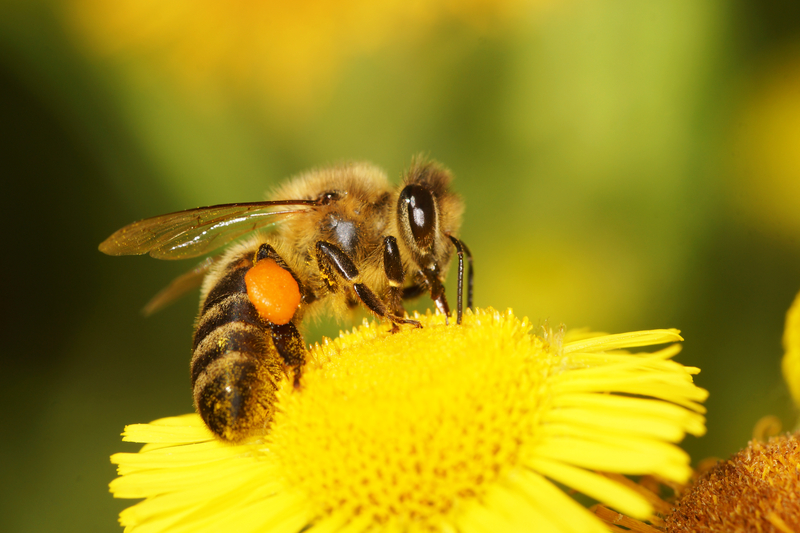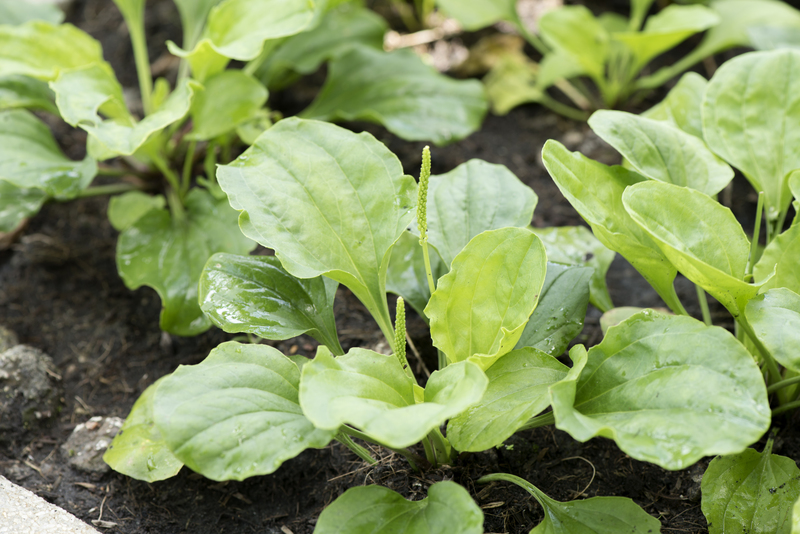Cultivate Orchids with Expert Guidance
Posted on 23/05/2025
Cultivate Orchids with Expert Guidance: The Ultimate Guide
Orchids--with their breathtaking diversity and exotic appeal--have long captured the hearts of plant lovers worldwide. Cultivating orchids successfully, however, can seem daunting for both beginners and seasoned gardeners. Whether you're an aspiring collector or an enthusiast seeking to grow orchids like an expert, this comprehensive article offers the ultimate roadmap to orchid cultivation, filled with expert tips, step-by-step guidance, and best practices.

Why Choose Orchids?
Orchids aren't just beautiful; they're symbols of elegance, refinement, and resilience. With over 25,000 species and more than 100,000 hybrids, these captivating plants can be adapted to almost any indoor or outdoor gardening scenario. But what sets orchid cultivation apart is the sheer joy of nurturing a plant that rewards your efforts with dazzling blooms and intriguing foliage.
- Variety: From vibrant Phalaenopsis to majestic Cattleyas and intricate Paphiopedilums, there's an orchid for everyone.
- Longevity: With proper care, orchids can live and flower for decades.
- Air purification: Orchid roots and leaves can help improve indoor air quality.
Understanding Orchid Basics: Foundation for Success
To successfully grow your own orchids, it's essential to understand the key factors influencing their growth. Orchids are unique--unlike most houseplants, they absorb moisture and nutrients primarily through their roots, which are often exposed to air. Most orchids are epiphytes, meaning they grow attached to trees or rocks in their natural environments.
Key Elements for Orchid Cultivation
- Light Requirements: Orchids need bright, indirect light. Too much direct sun can burn their leaves, while too little hinders blooming.
- Watering: The right balance is crucial. Overwatering or letting roots sit in water is a common mistake.
- Humidity: Orchids prefer a humidity level of 40%-70%.
- Temperature: Most orchids thrive between 60-80?F (15-27?C) with slight drops at night.
- Air Circulation: Good airflow prevents disease and helps roots remain healthy.
Keeping these fundamentals in mind will set you on the path to cultivating healthy and thriving orchids.
Selecting the Right Orchid: Expert Guidance for Beginners
Not all orchids are equally easy to cultivate. For beginners, choosing reliable and adaptable varieties is key. Here are the top orchid types for novice growers:
- Phalaenopsis (Moth Orchid): Extremely forgiving, blooms for months, and thrives in typical room conditions.
- Cattleya: Known for their large, fragrant blooms; these orchids tolerate a wider range of conditions.
- Dendrobium: Versatile and rewarding, with many vibrant flower forms.
- Paphiopedilum (Lady Slipper Orchid): Unique flowers and easy care requirements.
Expert tip: Start with a healthy plant from a reputable nursery, as orchids with robust leaves and roots are more likely to thrive.
Step-by-Step: How to Cultivate Orchids Like a Pro
1. Potting and Repotting Techniques
Orchids often outgrow their pots and need fresh growing medium every 1-2 years. The ideal substrate is a mix of bark, charcoal, and perlite, imitating their natural environment. Choose pots with ample drainage holes to allow air flow around the roots.
- Gently remove the orchid from its pot and shake off old medium.
- Trim away dead roots with sterilized scissors.
- Position the orchid so roots are spread out and fill with fresh medium.
- Repot right after blooming--never during active flower production.
2. Mastering Orchid Watering
Watering orchids requires a delicate touch. Overwatering is the number one killer of orchids, while underwatering leaves roots shriveled.
- Water thoroughly, letting water run through the pot and drain completely.
- Check the moisture level: dry substrate signals time to water, while damp bark means wait.
- Use tepid, non-chlorinated water, as cold or tap water can shock sensitive roots.
- Most orchids thrive on a 'soak and dry' cycle.
3. Fertilizing Orchids for Vigorous Growth
Use a balanced, diluted orchid fertilizer every two to four weeks during the growing season. Too much fertilizer can damage roots, while too little slows growth and blooming.
- Follow the "weakly, weekly" rule: Feed orchids with quarter-strength fertilizer each week or half-strength every two weeks.
- Flush pots with plain water monthly to remove salt build-up.
- The right nutrients encourage healthy leaves and abundant flowers.
4. Achieving the Ideal Orchid Light
Orchids flourish in bright, but indirect sunlight. Every type has unique preferences:
- Phalaenopsis: Prefers filtered light or east-facing windows.
- Cattleyas and Dendrobiums: Require stronger light, often from south or west windows.
- Leaf color tells all: Dark green leaves mean too little light, yellowish-green means just right, and deep yellow is a sign of too much.
- Sheer curtains or moveable shades help modulate sunlight.
5. Managing Orchid Humidity and Airflow
Orchids crave humidity, but stagnant air invites disease.
- Mist lightly in the morning, or use a humidity tray with water and pebbles underneath the pot.
- Group orchids together to maintain moisture around the leaves.
- Ensure consistent ventilation, especially during summer.
Advanced Orchid Care: Expert Guidance at Every Step
Pest and Disease Prevention
Healthy orchids resist most pests, but watch for mealybugs, spider mites, and scale insects. Spot treat with neem oil or insecticidal soap.
- Isolate new plants for a few weeks before introducing to your collection.
- Keep leaves dry to prevent bacterial and fungal issues.
- Practice good hygiene: Clean hands and tools before handling your plants.
Replicating Natural Orchid Rhythms
Many orchids require a rest period during winter, with reduced watering and cooler nights. Research your specific orchid species for seasonal care tips.
Encouraging Orchid Reblooming
Getting your orchid to rebloom is often the biggest challenge. Here's what experts recommend:
- Provide a night temperature drop of 10-15?F for several weeks.
- Increase light and humidity slightly after the plant finishes blooming.
- Trim the flower spike to an inch above a node for moth orchids, encouraging new flower spikes.
Propagation Methods for Orchid Enthusiasts
Advanced growers may want to multiply orchids through methods like keiki (baby plant) removal, division, and stem cuttings. Each method requires patience and a sterile environment.
- Division: Best for mature, multi-stemmed orchids like Cattleya and Oncidium.
- Keikis: Common with Dendrobium and Phalaenopsis, carefully remove and pot when roots develop.
Common Orchid Cultivation Mistakes and Expert Solutions
- Overwatering: Leads to root rot. Let the medium fully dry before watering again.
- Poor drainage: Ensure pots and substrate allow water to escape freely.
- Insufficient light: Relocate to a brighter spot or supplement with grow lights.
- Incorrect humidity: Use trays, grouping, or a humidifier to reach ideal levels.
- Fertilizer build-up: Flush pots regularly to remove excess salts.
Recognizing and swiftly correcting these errors ensures your journey to cultivate orchids with expert guidance is a success.
Seasonal Orchid Care Calendar
Maintaining a year-round care routine will keep your orchids healthy and productive:
- Spring and Summer: Increase watering and feeding frequency. Repot if needed and check for pests.
- Autumn: Reduce feeding, begin to decrease watering, monitor for cooler nights and less sun.
- Winter: Provide a rest period, especially for deciduous or temperate orchids. Keep away from heaters and cold drafts.
Expert Orchid Cultivation Tips for Enthusiasts
- Observe your plants. Learning to recognize signs of stress, such as limp leaves or lack of blooms, is key.
- Create a dedicated orchid care journal to track watering, feeding, repotting, and blooming cycles.
- Attend local orchid shows and societies: Connect with fellow growers and gain firsthand knowledge and support.
- Start small, but gradually expand your collection as you master each variety.
- Research thoroughly--each orchid species has unique care requirements. Reliable online resources and books can be invaluable.

Frequently Asked Questions: Grow Orchids with Confidence
How often should I water my orchid?
Watering depends on the climate, orchid species, and potting medium, but generally, once a week is sufficient. Always allow the medium to dry out first.
Why won't my orchid bloom?
The most common reasons are insufficient light, lack of a nighttime temperature drop, or inadequate feeding. Adjust these factors and consider a short "rest period."
What's the best spot in my home for orchids?
Bright windowsills--especially east or south facing--are ideal. Avoid direct afternoon sunlight, which can scorch leaves.
Should I remove aerial roots?
No! Healthy aerial roots are vital for orchid health. Trim only if they are dried or rotting.
Conclusion: Bring Joy to Your Home with Expert Orchid Cultivation
Mastering how to cultivate orchids with expert guidance opens a world of beauty and satisfaction. Whether you wish to decorate your home or dive into an exciting hobby, orchids reward patient and attentive growers with fascinations unmatched in the plant world. With these detailed steps and insider tips, even beginners will quickly blossom into skilled orchid caretakers.
Ready to start your journey? Gather your supplies, select a resilient orchid variety, and watch as your orchid collection transforms your living space. With consistency, curiosity, and the right approach, cultivating orchids will become a lifelong passion and source of pride!



